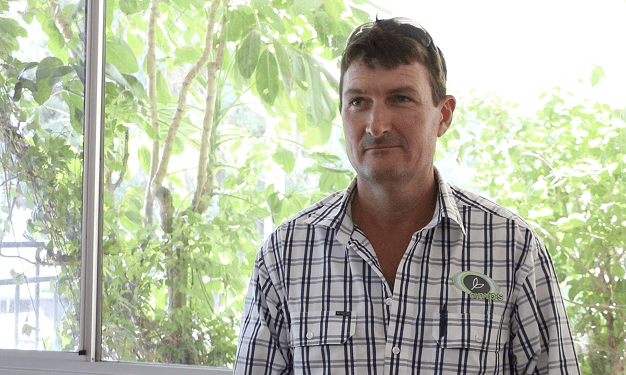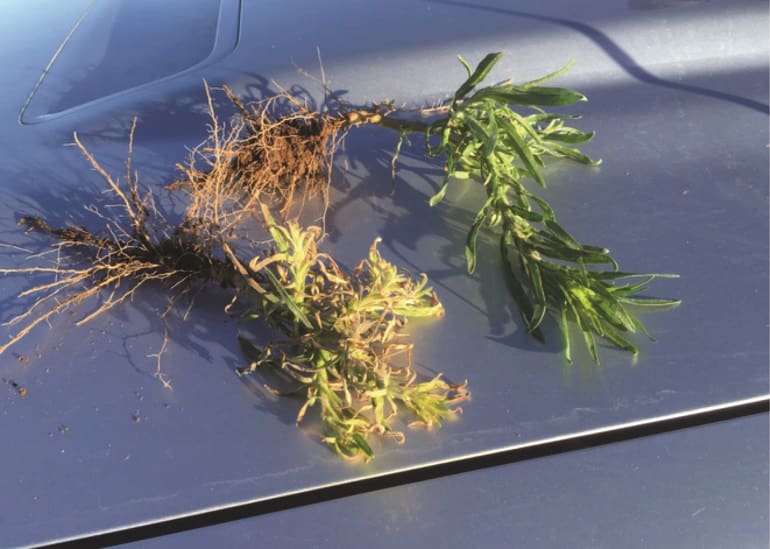
AMPS Moree consulting agronomist Tony Lockrey has seen good results when herbicides are rotated and mixed in each phase – the fallow, pre-sowing, in-crop and desiccation.
Ask a WeedSmart Expert
Mixing and rotating herbicide modes of action is a key strategy in the WeedSmart Big 6 – but it’s a herbicide response to a herbicide problem. So, while it’s critical, it must be implemented within a diverse weed management program.
AMPS Agribusiness senior agronomist, Tony Lockrey, Moree, has seen herbicide resistance get out of control on some farms in northern New South Wales while other growers have responded early and managed to maintain a broader spectrum of effective herbicides in their program.
“It has to start with herbicide resistance testing – specifically for susceptibility. Knowing what does work is very important as you’ve probably already got a fair idea about what doesn’t,” he said.
Once all the effective actives are ‘on the table’ it’s time to look at what crops can be grown to allow the use of the widest range of herbicide groups in the rotation, and where you might be able to find synergistic mixes that can further delay resistance and potentially allow the use of actives that are no longer effective on their own.
“When we sit down to plan out an integrated weed control program we want to make sure there is rotation and mixing going on in each phase – in the fallow, pre-sowing, in-crop and for desiccation, where required,” Mr Lockrey said.
“When this is done in conjunction with a determination to stop seed set and remove survivors then it is possible to keep weed numbers low.”
With an increasing number of proprietary herbicide mixes coming onto the market and the broad spectrum of synergistic and antagonistic interactions between potential mixing partners it pays to be well-informed and to seek advice.
If I already rotate modes of action why do I have to mix too?
Short answer: Rotation buys you time; mixing buys you shots. Mixing and rotating buys you time and shots.
Longer answer: Rotation of effective modes of action can significantly delay the onset of herbicide resistance and needs to be built into your crop rotation plan. Herbicides in Group A and Group B are particularly susceptible to multiple exposure resistance with as few as six exposures being enough to select for the resistant mutation.
By mixing MOA (mode of action) groups, either in the same tank mix or applied separately to the same population (like a double knock), those plants that survive one MOA are often killed by the second.
How does testing for susceptibility help when there’s a weed blow-out?
Short answer: Knowing what will work against a resistant population helps drive down the seed bank and helps you regain control.
Longer answer: One real-world example is a paddock near Moree where Group A resistant wild oats were discovered in 1998 following a history of repeated use of Topik (Group A – fop), Verdict (Group A – fop) and, later, Axial® (Group A – den). Testing of this population showed the wild oats was very susceptible to Group B sulfonylurea, so Atlantis was used to drive down the weed numbers. A new plan was then put in place with Groups B, A, C and M used across the winter cropping program, but there was still too much reliance on Group B. The current plan for the farm now includes pre-emergent herbicides from Groups K, J and D used individually and in mixes.

The fleabane on the right was unresponsive to glyphosate on its own but mixing picloram with triclopyr or 2,4 D to the glyphosate application was effective (left).
How do I integrate more mixes into my herbicide program?
Short answer: Look for opportunities for complementary mixes throughout the fallow and cropping seasons.
Longer answer: Many growers are looking for tank mixes to improve control of glyphosate-resistant seedlings. Knowing which mixtures are beneficial and which are antagonistic is important.
In the fallow, there are often opportunities to use the mix and rotate strategy to great effect in a double-knock application, such as:
- Group M (glyphosate) + Group I (2,4-D or fluroxypyr or picloram) followed by Group L (paraquat)
- Group M (glyphosate) followed by Group L (paraquat) + Group G (Sharpen or flumioxazin)
- Group M (glyphosate) followed by Group L (paraquat) + Group K (Dual Gold)
- Group A (Shogun) followed by Group L (paraquat) + Group K (Dual Gold)
Pre-plant examples include paraquat plus a triazine herbicide (Group C) or paraquat plus an imidazalinone (Group B), which are commonly used to provide broad spectrum knockdown and residual control. Dual Gold (Group K) is another common fallow residual option which is very compatible with glyphosate, triazines and paraquat.
An example of an in-crop mix is the addition of clethodim to haloxyfop (both Group A) to improve control of fop-resistant grasses in broadleaf crops where both are registered.
At the end of the season there is also some opportunity to mix desiccants for some crops.
None of these mixes are provided as recommendations – seek advice for your own situation and always read and follow the label.
What about application set up for mixtures?
Short answer: Some herbicides require better coverage. In many instances the most important mixing partner is more water.
Longer answer: Suitable product and water rates, droplet size and the right adjuvant, are critical for optimising herbicide efficacy.
For example, while a fallow mix such as glyphosate plus a Group A, or a Group G (depending on the target weed), is physically compatible, the components have different requirements for optimal performance. Seek advice about the best water rate to use, the potential impact of an oil-based adjuvant (required for most Group A and Group G herbicides) on glyphosate efficacy for some summer grass weeds, and other possible risks.
How do I avoid generating multiple and cross-resistance?
Short answer: Implement as many different weed control strategies as possible. The WeedSmart Big 6 is a practical foundation for an integrated program of herbicide and non-herbicide tactics.
Longer answer: Rotating and mixing herbicide groups can give you room to move in holding off resistance or getting more out of some marginally effective products.
The only way to stave off herbicide resistance completely is to have low weed numbers and to be vigilant about preventing survivors from setting seed. Have a diverse cropping program, use herbicides to provide early weed control, set your crops up to compete strongly and monitor and remove survivor weeds.
Source: WeedSmart
………………………………………………………………………………………………………………………………………………….
How to ask a WeedSmart question
Ask your questions about mixing and rotating herbicides on the WeedSmart Innovations Facebook page WeedSmartAU, Twitter @WeedSmartAU or the WeedSmart website www.weedsmart.org.au/category/ask-an-expert/
‘WeedSmart’ is an industry-led initiative that aims to enhance on-farm practices and promote the long term, sustainable use of herbicides in Australian agriculture.



HAVE YOUR SAY